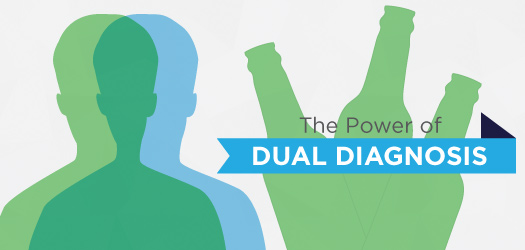Article Contributed By The Staff Of American Addiction Centers

While millions of people who suffer from substance addiction are in treatment, many others don’t receive help they so desperately need.
According to the Substance Abuse and Mental Health Services Administration (SAMHSA), 45.6 million people aged 18 or older had a mental illness in 2011, but only 31.6 million people received mental health treatment. 20.6 million people were classified with substance dependence or abuse, but only 3.8 million sought substance use treatment. [1]
An estimated 37% of alcohol abusers and 53% of drug abusers have co-occurring disorders, meaning they not only have a substance abuse problem, but they also suffer from some form of behavioral health illness, such as:
- Depression
- Bi-polar disorder
- Schizophrenia
This ‘dual diagnosis’ is becoming more understood and emphasized in the treatment community.
So, Which Comes First… Substance Abuse or Behavioral Health Issues?
For someone battling co-occurring disorders, it’s difficult to pinpoint the primary disorder, as each individual case is unique. For some, emotional instability can lead to self-medication where alcohol and/or drugs are used to calm nerves and numb psychological pain.
Of all people diagnosed as mentally ill, 29% abuse alcohol or drugs. [3] In these cases, it can be assumed that the person had a tendency toward mental illness that was further aggravated by substance abuse.
For others, prolonged drug or alcohol dependency can lead to psychiatric disorders, such as depression or hallucinations. In these cases, substance abuse is the primary disorder and the subsequent psychiatric issues worsen the condition.
Stress Management Techniques
Stress management techniques play a huge role in the development of substance abuse and anxiety disorders. Canadian researchers found that people with chronic anxiety or stress were more likely to self-medicate with drugs or alcohol, and later develop a substance abuse problem.
13% of people in the study who had consumed alcohol in the previous year did so to reduce stress
13% of people in the study who had consumed alcohol in the previous year did so to reduce stress, as did the one-fourth who had used drugs. Those who self-medicated to reduce stress were also more likely to be diagnosed with a social anxiety disorder by the end of the study.
Dual Diagnosis Is Often Overlooked
It is widely believed that many people with dual diagnosis don’t receive the right kind of treatment. If a patient is treated for drug abuse, but his or her mental illness goes unaddressed, there is an increased chance of relapse and decreased chance of sustained recovery.
Dual diagnosis patients need therapy and rehabilitation, and often medication, to keep behavioral health issues under control. If not properly treated, these patients will spend much time and energy bouncing back and forth between facilities, or between a facility and the streets. Many are relapsing and falling further into mental illness.
Some of these patients will become suicidal, some will be impoverished and homeless, and most will spend years wondering why they aren’t able to get over their addiction.
There Is Hope for Patients With Co-Occurring Disorders
Many behavioral health professionals have recognized that substance dependency is a big problem, and have stopped relegating it to a symptom of mental illness. By doing so, they broaden their view of their patients and do not mistakenly categorize substance abuse under the umbrella of mental health disorders.
There has also been an increased awareness of dual diagnosis in the medical field, which has led to more discussions about treating both disorders simultaneously, rather than one at a time. By doing so, treatment effectiveness increases, as both the mental health disorder and the substance abuse are treated at each stage of recovery.
Increased Awareness of Dual Diagnosis
This increased awareness also results in further research among the medical field, which can only lead to further discussion and treatment that can be effective for both the patients and their families.
More and more treatment facilities are working on protocols for dual diagnosis treatment. Continued collaboration between physicians is important, as is educating patients about how these disorders affect one another.
Sources:
[1] SAMHSA - http://www.samhsa.gov/data/2k12/MHUS2010/MHUS-2010.pdf
[2] NMHA - http://www.nmha.org/go/information/get-info/co-occurring-disorders/dual-diagnosis
[3] NAMI - http://www.nami.org/Content/NavigationMenu/Inform_Yourself/About_Mental_Illness/About_Mental_Illness.htm
Last Updated & Reviewed By: Jacquelyn Ekern, MS, LPC on June 5th, 2014
Published on AddictionHope.com, Treatment Directory for Drug Abuse
